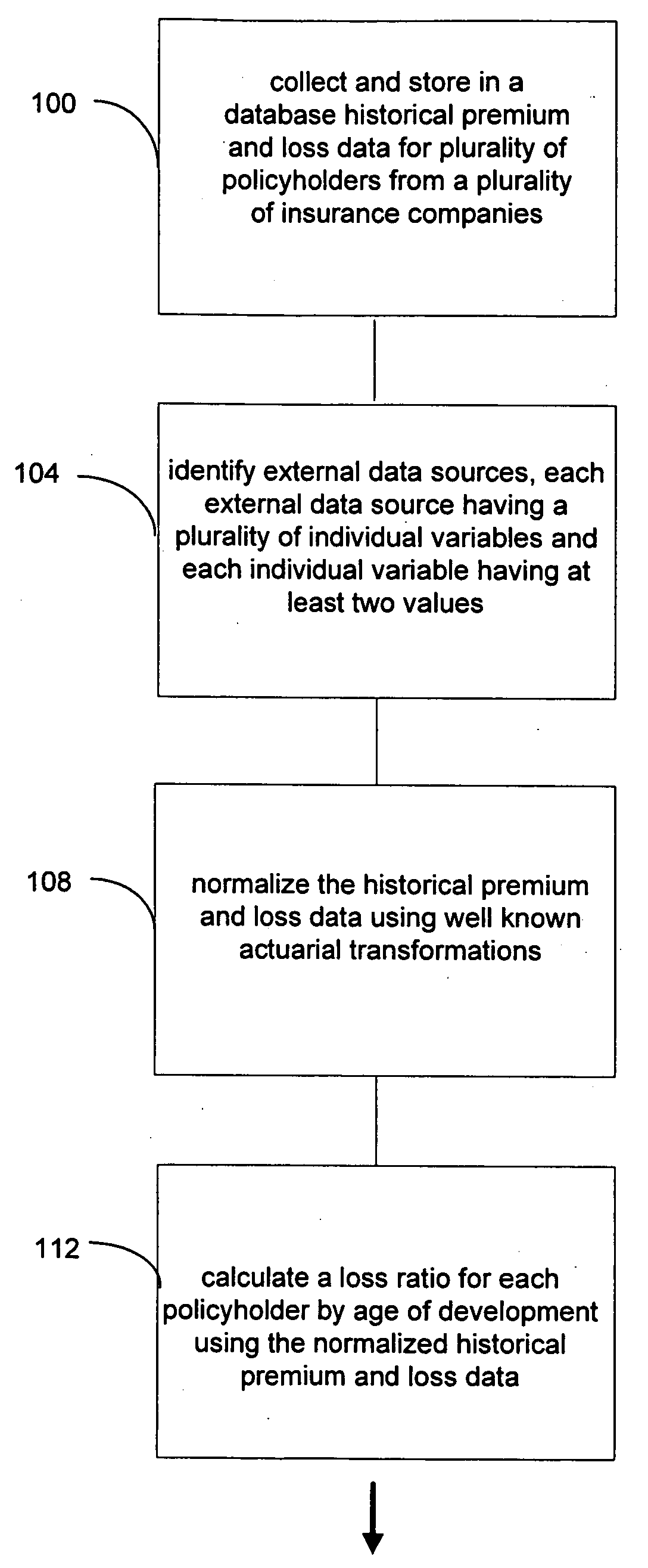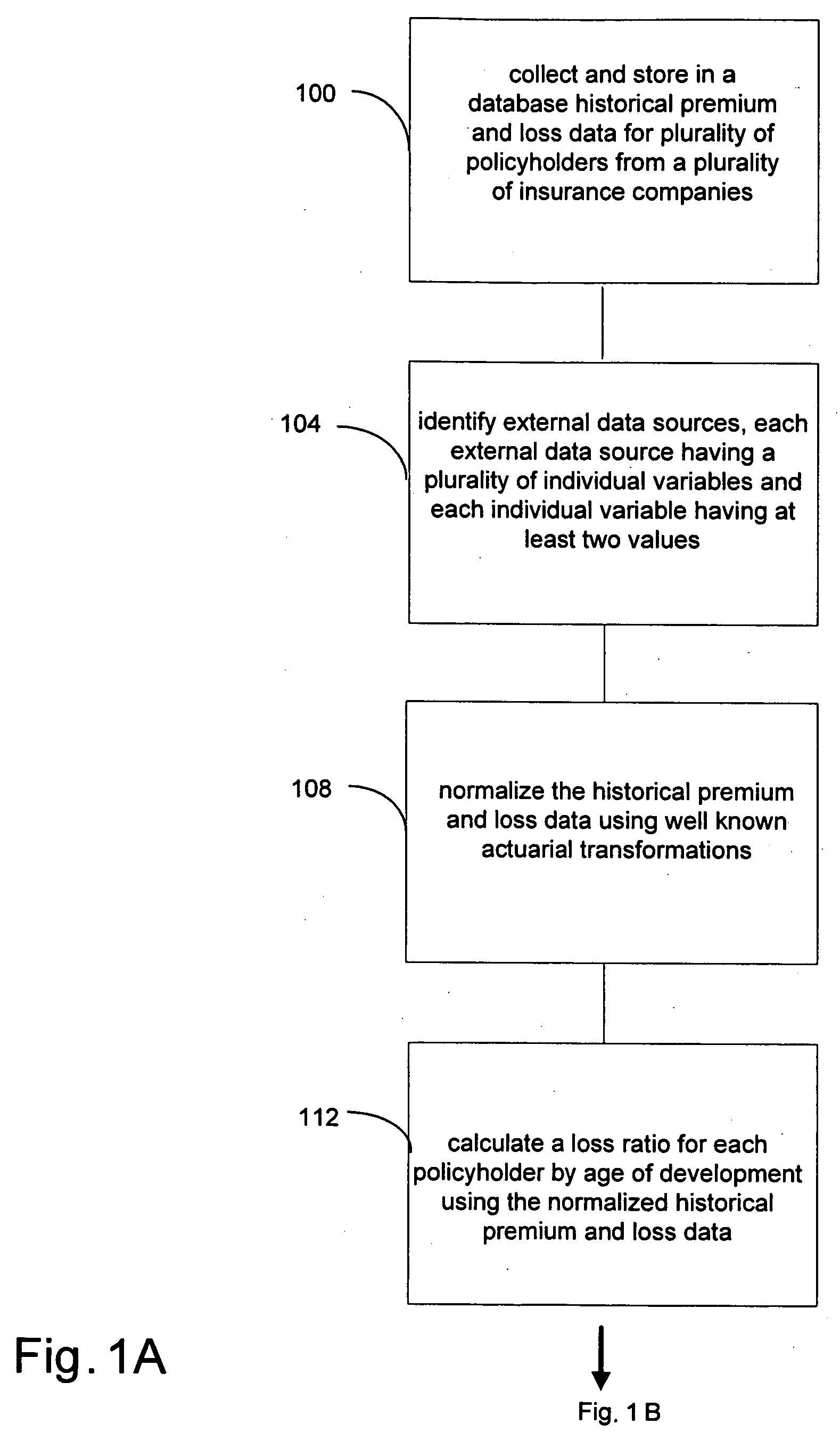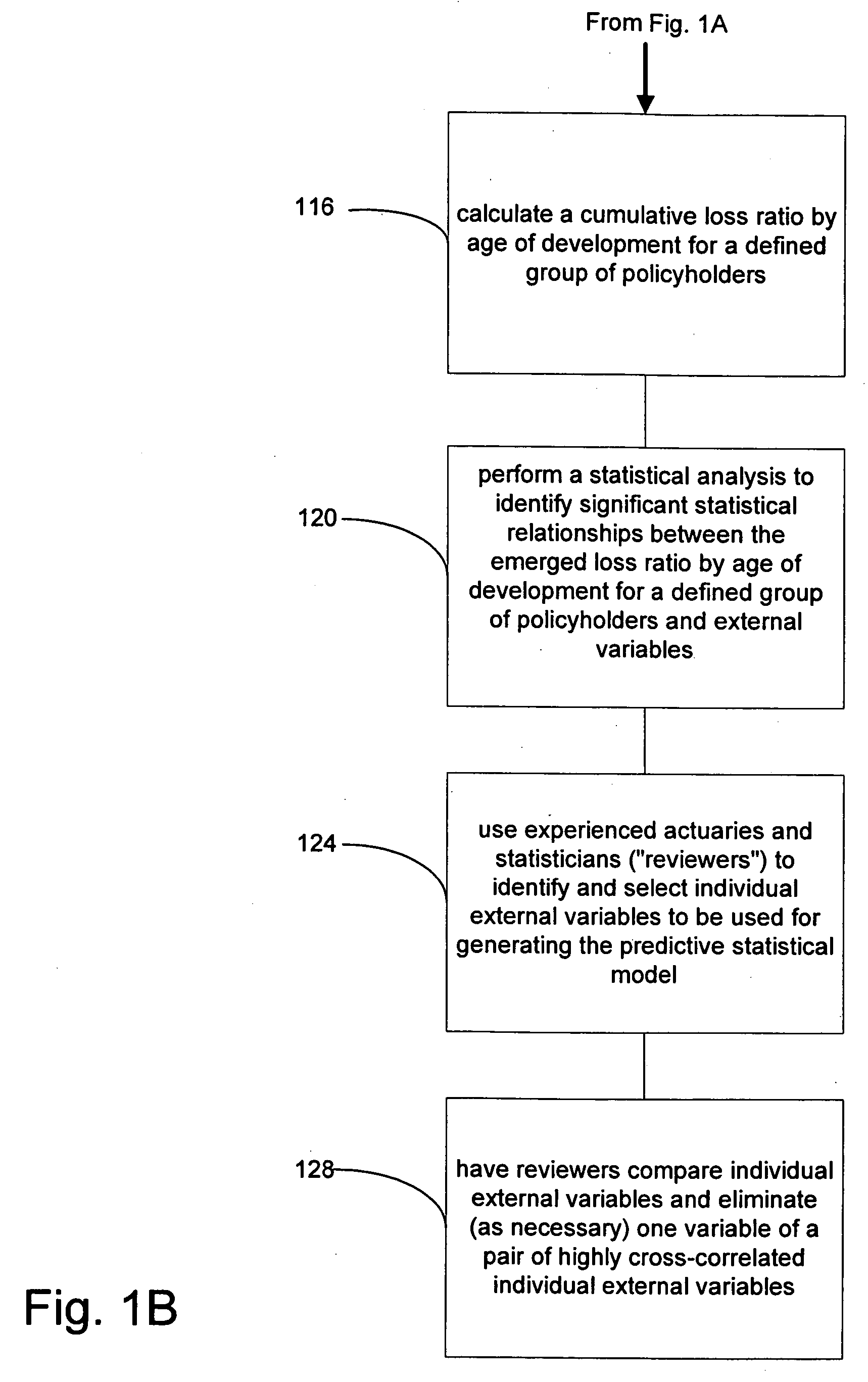Method and system for estimating insurance loss reserves and confidence intervals using insurance policy and claim level detail predictive modeling
a predictive modeling and insurance policy technology, applied in the field of method and system for estimating insurance loss reserves and confidence intervals using insurance policy and claim level detail predictive modeling, can solve the problems of reducing the confidence of prediction based on that data, and affecting the accuracy of claims
- Summary
- Abstract
- Description
- Claims
- Application Information
AI Technical Summary
Benefits of technology
Problems solved by technology
Method used
Image
Examples
Embodiment Construction
[0053] Reference is first made to FIGS. 1A and 1B which generally depict the steps in the process preparatory to gathering the data from various sources, actuarially normalizing internal data, utilizing appropriate key or linkage values to match corresponding internal data to the obtained external data, calculating an emerged loss ratio as of an accounting date and identifying predictive internal and external variables preparatory to developing a statistical model that predicts ultimate losses in accordance with a preferred embodiment of the present invention.
[0054] To begin the process at step 100, insurer loss and premium data at the policyholder and claim level of detail are compiled for a policyholder loss development data base. The data can include policyholder premium (direct, assumed, and ceded) for the term of the policy. A premium is the money the insurer collects in exchange for insurance coverage. Premiums include direct premiums (collected from a policyholder), assumed ...
PUM
 Login to View More
Login to View More Abstract
Description
Claims
Application Information
 Login to View More
Login to View More - R&D
- Intellectual Property
- Life Sciences
- Materials
- Tech Scout
- Unparalleled Data Quality
- Higher Quality Content
- 60% Fewer Hallucinations
Browse by: Latest US Patents, China's latest patents, Technical Efficacy Thesaurus, Application Domain, Technology Topic, Popular Technical Reports.
© 2025 PatSnap. All rights reserved.Legal|Privacy policy|Modern Slavery Act Transparency Statement|Sitemap|About US| Contact US: help@patsnap.com



